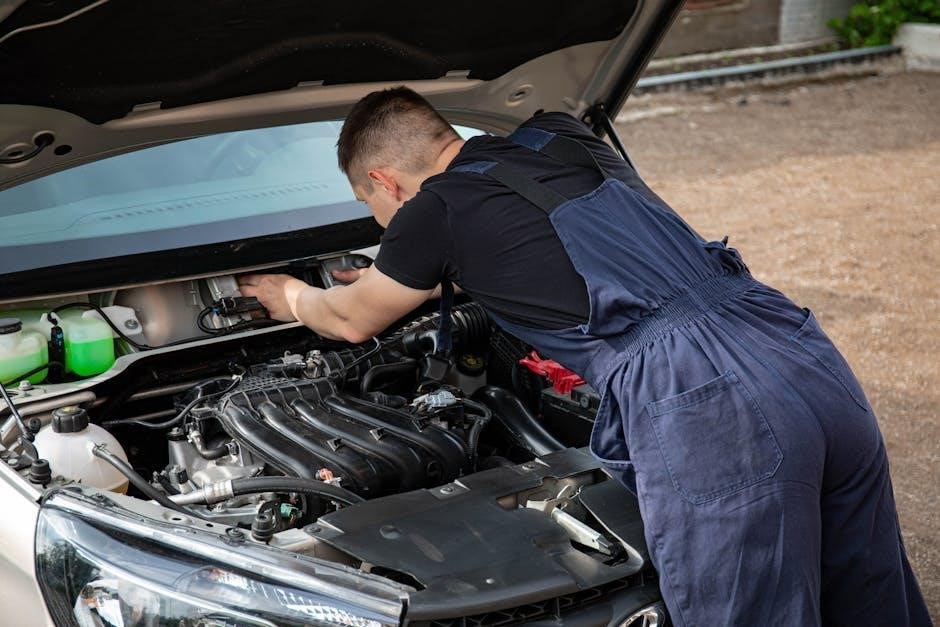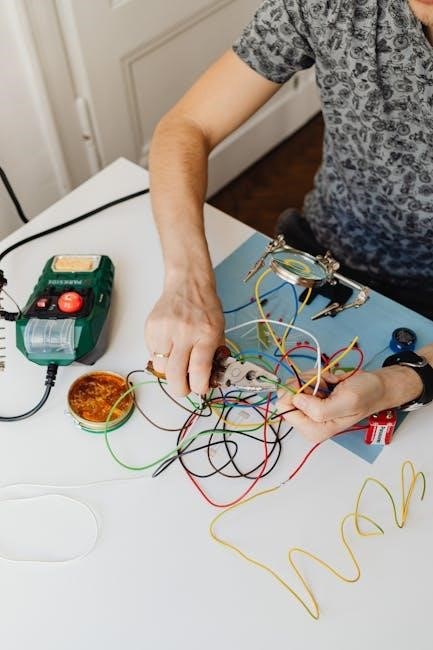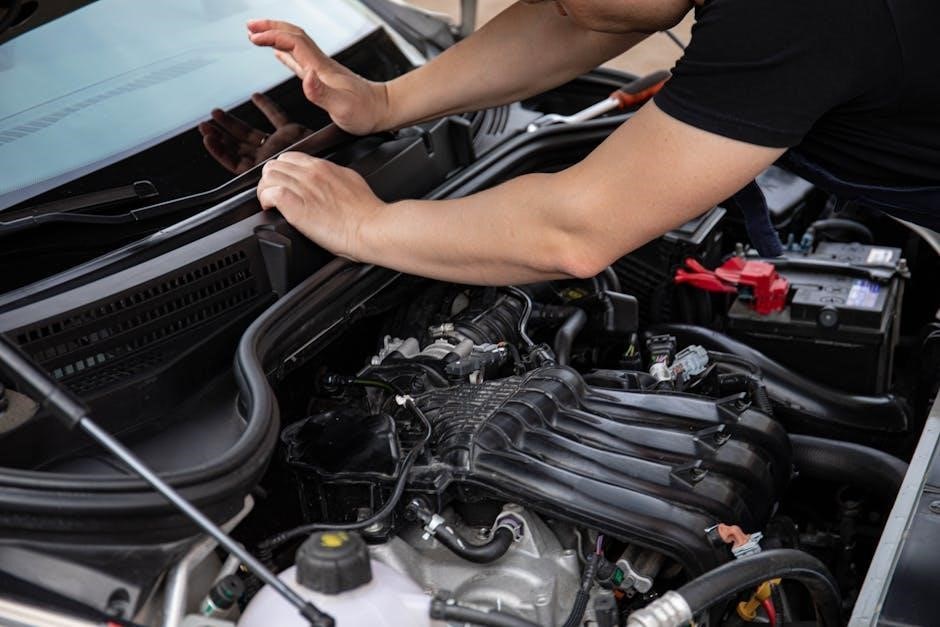Wii Troubleshooting Guide for Owners
Welcome‚ Wii owners! This guide provides solutions for common Wii console problems. From power issues and disc drive malfunctions to connectivity problems‚ we’ll help you troubleshoot and get back to gaming. Let’s keep your Wii running smoothly!
Identifying Your Wii Model
Before troubleshooting‚ identify your Wii model. The original Wii (RVL-001) is the most common and was initially available in white. It’s a compact console measuring 44mm wide‚ 157mm tall‚ and 215.4mm deep. The model number is located on the bottom of the console.
Identifying your Wii model is crucial for accessing the correct troubleshooting resources and compatibility information. This is especially important when considering factors like game compatibility‚ as some older consoles may have difficulty with dual-layer discs used by games like Xenoblade Chronicles and Metroid Prime Trilogy. Knowing your model number ensures you find the appropriate solutions for your specific console.

Common Wii Problems
Wii consoles can experience power issues‚ disc reading errors‚ and remote synchronization failures. Understanding these common problems is the first step toward finding effective solutions and getting back to enjoying your games.
Power Issues and Solutions
Experiencing power problems with your Wii can be frustrating‚ but often the fix is simple. Start by resetting the AC adapter: unplug it from both the wall and the console‚ waiting at least two minutes before plugging it back in. This often resolves minor power glitches.
If the Wii still doesn’t power on‚ ensure the power outlet is functioning correctly by testing it with another device. Check the AC adapter for any signs of damage‚ such as frayed cords or a loose connection. A faulty AC adapter may need replacement.
If the Wii powers on but then suddenly shuts off‚ overheating may be the issue. Ensure the console has adequate ventilation and isn’t placed in an enclosed space. Cleaning any dust buildup around the console can also help improve airflow and prevent overheating.
Disc Reading Errors
Encountering disc reading errors on your Wii can interrupt your gaming fun. First‚ ensure the game disc is clean and free of scratches or smudges. Gently wipe the disc with a soft‚ lint-free cloth from the center outwards.
If the issue persists‚ try cleaning the Wii’s lens using a lens-cleaning kit. Dust and debris can accumulate on the lens‚ preventing it from properly reading discs. Follow the kit’s instructions carefully to avoid damaging the lens.
Some older Wii consoles may struggle with dual-layer discs‚ like Xenoblade Chronicles. If your Wii consistently fails to read these discs‚ consider a lens cleaning or contacting Nintendo support. Ensure the disc is inserted correctly‚ label-side up. If errors continue‚ the disc drive may require professional repair or replacement.
Wii Remote Synchronization Problems
Wii Remote synchronization issues can be frustrating‚ preventing you from properly controlling your games. Start by ensuring your Wii Remote has fresh batteries‚ as low power can disrupt the connection. Next‚ try resynchronizing the remote with the Wii console.
To do this‚ press the red “SYNC” button on the Wii console‚ located behind the front cover‚ and then press the red “SYNC” button on the back of the Wii Remote. Hold both buttons for a few seconds until the blue lights on the remote stop flashing and remain solid.
If synchronization fails‚ try moving closer to the Wii console to minimize interference. Ensure no other wireless devices are interfering with the Bluetooth signal. If problems persist‚ try synchronizing one remote at a time to rule out conflicts. If all else fails‚ consider resetting the Wii Remote or contacting Nintendo support for further assistance.

Resetting Your Wii
Resetting your Wii can resolve software glitches or prepare it for sale. This process erases personal data‚ returning the console to its factory settings. Follow the steps carefully to complete the reset.
Step-by-Step Guide to Resetting
To reset your Wii‚ start by accessing the Wii System Settings from the main menu. Navigate through the options until you find “Format Wii System Memory”. Select this option to initiate the reset process. The console will prompt you with warnings about data loss‚ so ensure you’ve backed up any important information beforehand. Follow the on-screen instructions carefully to proceed.
The reset process is straightforward‚ but it’s crucial to understand its implications. Resetting erases all saved games‚ channels‚ and personal settings. Once the process begins‚ it cannot be undone. After confirming your decision‚ the Wii will begin formatting its internal memory. This may take some time‚ so be patient and avoid interrupting the process.
Once complete‚ your Wii will be restored to its original factory state.
Internet Connectivity Troubleshooting
Having trouble connecting your Wii to the internet? This section will guide you through common connectivity issues. We’ll explore solutions for wireless interference and network errors to get you back online.
Wireless Interference
Wireless interference can significantly impact your Wii’s ability to connect to the internet. Signals from other devices‚ such as microwaves or cordless phones‚ can disrupt the Wi-Fi signal. To mitigate this‚ try repositioning your Wii closer to the router‚ ensuring there are minimal obstructions like walls between them.
Additionally‚ check for other devices operating on the same frequency band and consider changing your router’s channel. Consult your router’s manual for instructions on accessing its settings and selecting a different channel. Regularly restarting your router and Wii can also resolve temporary network glitches causing interference.
For further assistance‚ refer to Nintendo’s detailed troubleshooting guide for improving slow download times or errors received while connecting. Remember to keep your Wii and router firmware updated to ensure optimal performance and compatibility‚ minimizing potential wireless interference issues.
Maintaining Your Wii
Proper maintenance is key to extending your Wii’s lifespan. Regular cleaning prevents dust build-up‚ which can cause overheating and performance issues. Keeping your console in a well-ventilated area is also very important.
Cleaning the Lens
Disc reading errors are often caused by a dirty lens. To clean it‚ you’ll need a Wii lens cleaning kit‚ readily available online or at electronics stores. First‚ turn off your Wii and unplug it from the power outlet for safety. Carefully insert the cleaning disc into the Wii‚ following the kit’s instructions. The disc contains a small brush that gently wipes the lens as it spins.
Run the cleaning disc for the recommended time‚ typically a few seconds. After cleaning‚ try playing a game to see if the issue is resolved. If not‚ repeat the process once more‚ but avoid overusing the cleaning kit‚ as excessive cleaning could potentially damage the lens. Ensure the environment is dust-free during the cleaning process to prevent recontamination.

Replacing Wii Parts
Sometimes‚ troubleshooting may require replacing faulty parts. Common replacements include the DVD drive‚ faceplate‚ and sensor bar. Ensure you source compatible parts and follow reliable repair guides for successful replacement.
Most Often Replaced Parts
When your Wii starts showing its age‚ certain components are more prone to failure than others. Understanding these common problem areas can help you anticipate potential repairs and extend the lifespan of your console. The DVD drive‚ responsible for reading game discs‚ is a frequent culprit‚ often struggling with dual-layer discs or failing altogether.
The Wii’s faceplate‚ primarily cosmetic‚ is susceptible to damage from accidental bumps or drops. The sensor bar‚ crucial for Wii Remote functionality‚ can also require replacement due to cable damage or internal component failure. Finally‚ the cooling fan may need replacing. Knowing these most commonly replaced parts is the first step in Wii maintenance.

Wii Dimensions
Understanding the physical dimensions of your Wii console is essential for proper placement and integration into your entertainment setup. The original Wii‚ known for its compact design‚ measures approximately 44 millimeters wide‚ 157 millimeters tall‚ and 215.4 millimeters deep. This slim profile allows it to fit comfortably in most media cabinets or on shelves.
These dimensions make the Wii the smallest of the seventh-generation consoles. Keep in mind that‚ unlike modern consoles‚ the Wii does not have a built-in display and requires connection to an external TV or monitor. Knowing these dimensions is beneficial for planning your entertainment center layout.
